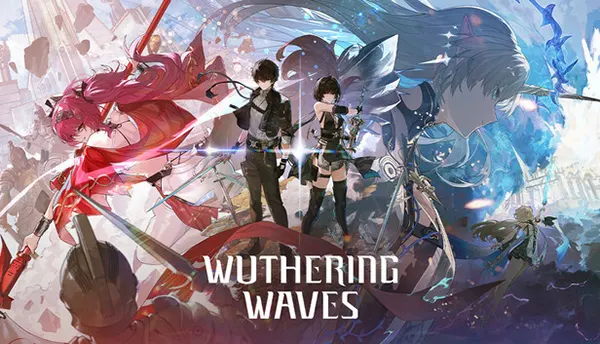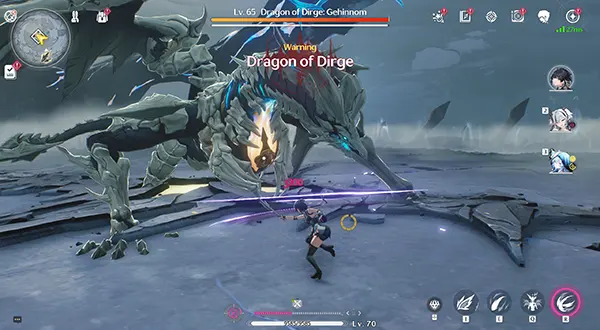
As of June 2025, “Wuthering Waves” by Kuro Games has sparked considerable discussion within the gaming community. This open-world action RPG, blending post-apocalyptic elements with vibrant anime aesthetics, enters a market still heavily influenced by miHoYo’s Genshin Impact. The question stands: can Wuthering Waves truly eclipse the success of its predecessor, or does it carve a separate identity worth exploring?
From a technical standpoint, Wuthering Waves sets itself apart with a more kinetic combat system and a sophisticated visual engine. The game runs on a custom framework designed to accommodate faster movement, vertical traversal, and smoother animation blending. This creates a more fluid experience than Genshin Impact, especially during intense battles and boss fights.
The world design also leans into a darker, more grounded dystopia. Compared to Genshin’s fantasy-driven regions, Wuthering Waves presents a broken civilisation trying to rebuild, offering players a narrative that feels mature and thematically consistent. The graphic detail, from wind-swept ruins to hyper-realistic lighting, adds to the game’s immersive quality.
Performance-wise, the game has been optimised for both PC and mobile devices with surprisingly few compromises. As of June 2025, the game supports high refresh rates, real-time shadows, and scalable texture settings on Android and iOS, giving it a strong technical edge for players on the go.
Combat in Wuthering Waves is built around precision, timing, and customisation. Unlike Genshin’s elemental reaction model, it introduces a parry-dodge system combined with class-based abilities, offering greater depth and mechanical satisfaction. Character kits are also modular, letting players shift between attack styles mid-combat.
Mobility is another pillar where Wuthering Waves excels. Grappling hooks, wall runs, and double jumps transform how players navigate the map. Exploration feels less about unlocking static waypoints and more about dynamically interacting with vertical structures, encouraging creative traversal.
As of mid-2025, updates have added new movement options, including hover boards and zip lines, reinforcing the game’s commitment to traversal as a core mechanic. This sets it distinctly apart from Genshin’s stamina-restricted climbs and glides.
Storytelling in Wuthering Waves unfolds in a fragmented world recovering from cataclysm. Rather than following a linear hero’s journey, the game focuses on themes of memory loss, post-war trauma, and identity reconstruction. The protagonist wakes up without a name, gradually piecing together events that shaped the devastated environment.
Each region and NPC contributes to the overarching narrative, offering quests that explore survival, ethics, and the consequences of failed technology. The game’s lore is scattered across voice logs, item descriptions, and interactive terminals, creating a layered experience for lore hunters.
Unlike Genshin’s whimsical and often comedic tone, Wuthering Waves maintains a more serious, introspective mood. This deliberate contrast appeals to players seeking mature themes without sacrificing fantasy-based escapism.
Wuthering Waves avoids traditional gacha tropes by introducing a hybrid system: characters are unlocked via story progression or through “Resonance Beacons,” which blend guaranteed unlocks with optional rolls. This addresses long-standing complaints about predatory monetisation in similar games.
Progression is based on affinity and memory shards rather than conventional XP. Each character unlocks new dialogue, backstory, and visual elements as the player spends time with them in combat and exploration. This design choice enhances immersion and fosters deeper emotional bonds.
Costume customisation and combat stance variations were introduced in the May 2025 patch, offering both visual variety and mechanical tweaks. This ensures characters evolve not only through stats but also through player-driven expression.

The initial player response to Wuthering Waves was overwhelmingly positive, with over 12 million downloads across PC and mobile within the first month of global launch. Critics praised its mechanical polish, and its darker narrative tone resonated well with players seeking an alternative to anime-style fantasy games.
Feedback channels via Discord and Reddit have played a major role in guiding updates. Kuro Games adopted a transparent development roadmap, introducing community polls for upcoming content and hosting developer Q&A sessions biweekly. This proactive model has fostered a strong, loyal player base.
In June 2025, the “Echoes of the Abyss” expansion introduced two new zones, three characters, and additional endgame raids. Notably, this expansion also rebalanced several core mechanics based on user analytics, reinforcing the studio’s commitment to user-centric design.
While it’s premature to declare Wuthering Waves a definitive “Genshin killer,” the game has successfully built a sustainable and growing audience. Genshin still dominates in global revenue and content volume, but Wuthering Waves outpaces it in mechanical complexity and user control preferences.
Market analysts in Q2 2025 noted that Wuthering Waves captured 26% of the open-world mobile ARPG segment, particularly in Europe and Southeast Asia. This is a significant share for a title less than a year into its lifecycle.
Rather than replacing Genshin, Wuthering Waves stands as a viable peer—one that signals a maturing genre where different tones and gameplay priorities can coexist, offering more tailored experiences for distinct audiences.